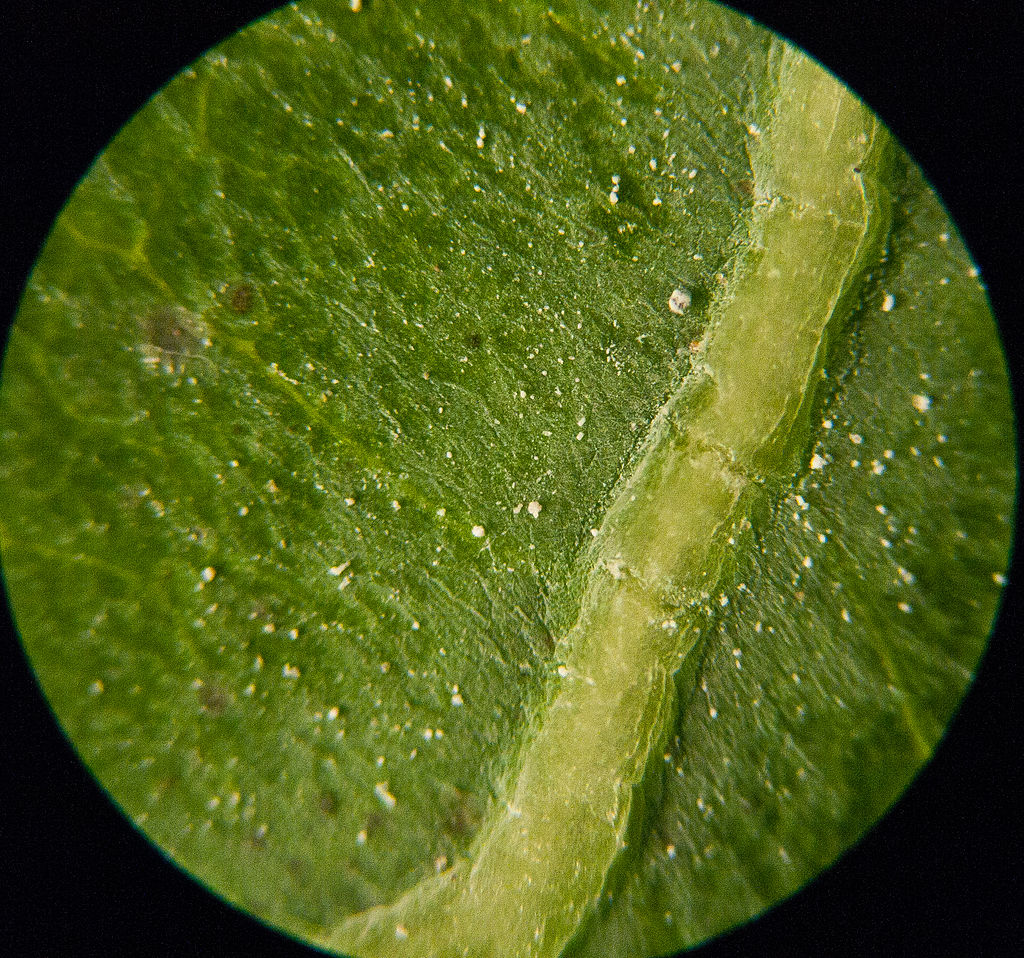Plants get sick too
 Saturday, July 12, 2014 at 04:09AM
Saturday, July 12, 2014 at 04:09AM Like so many others, I spent a bit of time recently being ill. In between the sniffles, coughs, nausea and self-indulgence, I had time to think about immunity, but not just my own. I found myself musing about plant immunity. I mean they get sick too, right?  Image by Оля Марусин та Zlir'a (Own work (Власна робота)), via Wikimedia Commons Well yes they do and after some quick research I was surprised and impressed at the complexity and ingenuity of immunological response exhibited by those in the other living kingdom. Here’s a quick overview.
Image by Оля Марусин та Zlir'a (Own work (Власна робота)), via Wikimedia Commons Well yes they do and after some quick research I was surprised and impressed at the complexity and ingenuity of immunological response exhibited by those in the other living kingdom. Here’s a quick overview.
Plants, like humans (and other animals) can suffer from the actions of viruses, bacteria, fungi and parasites and, like us, they protect themselves with physical structures to minimise the chance that a predator or pathogen will cause serious damage. In humans, an example of this is the skin; in plants, the waxy cuticle often found on the surface of leaves. Most plant pathogens find their way into the plant via w wound or other opening, e.g: stomata. Vertebrates also have an adaptive component of their immune system that features specialised immune cells (lymphocytes) such as B cells and T cells. This adaptation allows vertebrates to “remember” a particular pathogen and so mount a very quick defence of they encounter it again in the future.
Plants do not have these sorts of immune cells, but that does not mean that their immune responses are any less impressive. On the contrary, plants exhibit a wide range of antimicrobial defences.
Plants and their pathogens have been evolving together for millions of years, so their relationships and their respective adaptations are complex. Pathogens come with baggage – biochemical baggage, known as pathogen-associated molecular patterns or PAMPs - and it this that plants need to be able to recognise. Examples of PAMPs include the proteins that make up the flagella of bacteria, lipopolysaccharides and peptidoglycans (which are found on the cell membrane of some bacteria) and chitin. Chitin is the main component of crustacean and insect body parts, as well as the cell walls of fungi.
If an organism made in part of chitin attacks a plant, the plant can produce chitinases, enzymes that can break down the chitin. That’s a very useful adaptation, but the story doesn’t end there. Many plant pathogens have evolved a response to this response. In such a situation, Cladosporium fulvum (a fungus) will, for example, secrete a lectin (a protein) that binds to the chitin in its cell walls, protecting it against the chitinases produced by the plant.
One of the most clever responses of plants to attack is the co-opt assistance from other organisms. When a tobacco hornworm caterpillar takes a bite from a tasty tobacco leaf, it triggers an emergency response from the tobacco plant. The tobacco plant releases green leaf volatiles (GLVs). These are the compounds that give freshly mowed grass its distinctive aroma. When the saliva of the hornworm caterpillar mixes with the GLVs released by the plant, they are changed, making them very effective at attracting predators, which then eat the herbivores that are consuming the plant. There are many other examples of this strategy throughout the plant kingdom.
In the case of a viral infection, the virus releases proteins known as effector proteins. These can be recognised by the plant’s resistance genes, or R genes. The response of R genes can trigger warning signals to be sent other part of the plant; they can even lead to changes in the local cell walls to prevent the virus spreading further. Plants can even be immunised against some diseases, by manipulating these R genes so their response lasts longer for more enduring protection.
Most plant pathogens feed on living plant tissue, so one way of limiting the spread of a pathogen is to isolate the area of attack and kill the surrounding cells. This is known as a hypersensitive response, and is basically selected cell suicide. One visible indication of this can be a patchy or mottled appearance of plant leaves.
 Image by Andrew PurdamDeep down I think I knew that once I started looking into plant immunity, I was going to be impressed, and I have been. I have barely scratched the surface (epidermis?), so if you want to know more, here are a few useful places to start.
Image by Andrew PurdamDeep down I think I knew that once I started looking into plant immunity, I was going to be impressed, and I have been. I have barely scratched the surface (epidermis?), so if you want to know more, here are a few useful places to start.
http://journal.frontiersin.org/Journal/10.3389/fpls.2014.00178/full
http://www.abc.net.au/science/articles/2012/06/12/3522493.htm
http://www.nature.com/nature/journal/v444/n7117/full/nature05286.html

Reader Comments